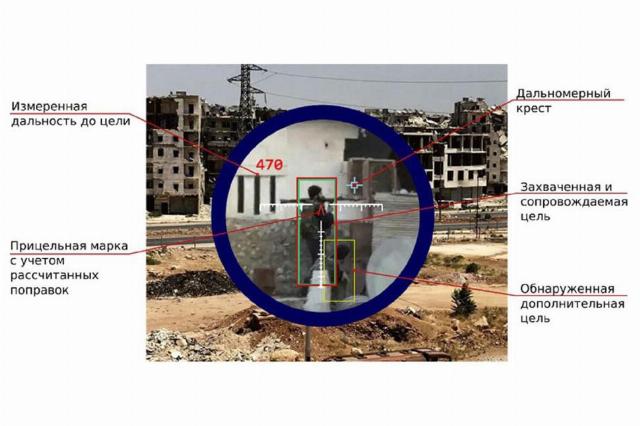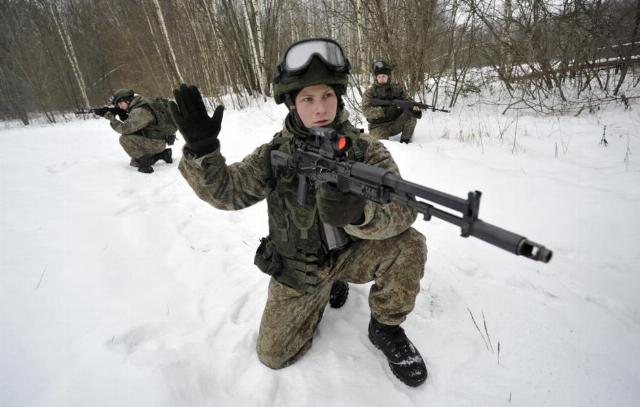The Kalashnikov Concern has patented a system for controlling small arms fire. The "smart sight" will not only detect and recognize the target, but will also open fire on its own — the fighter only needs to point the machine gun at the point indicated on the display. TASS — about the history of intelligent aiming systems and new developments by Russian gunsmiths
Bekhan Ozdoev, industrial director of the cluster of conventional weapons, ammunition and special chemicals at Rostec State Corporation, told TASS in an interview in 2023 that a fire control system for small arms was being developed in Russia.
"In particular, it will not allow a shot to be fired until the brand of the sight is aligned with the target," Ozdoev said. — In the future, the system will perform a fairly large range of tasks, which today are entirely on strelka. This is the detection of a target, its capture in sight, the introduction of corrections based on current weather data, and much more."
In January 2025, it became known that Kalashnikov had patented a system that controls the fire of small arms. It follows from its description that the novelty will not only be able to independently detect and recognize targets thanks to machine learning, but will also help the shooter to make an accurate shot. The module, which includes a television, thermal imaging part and electronics, is located in place of a traditional sight. The rangefinder module is mounted on the weapon in the forearm area. The trigger mechanism has an electric drive that allows you to fire shots according to electronic commands. "The automated control system is designed with the possibility of automated firing when combining the sighting mark with a recognized target," says the description of the invention to the patent.

© Kalashnikov Concern Joint Stock Company/ Rospatent
Image source: © Kalashnikov Concern Joint Stock Company/ Rospatent
The developers conducted laboratory and field tests of a mock-up sample of the complex. They showed that the shooter is 1.6 times more likely to hit the head target at a distance of 300 m from the first shot than without the help of the innovative system. Due to the high degree of automation of all processes, the effectiveness of the small arms complex will be significantly higher than traditional weapons.
A sight that fired by itself
The first "smart sight" for small arms can be considered the development of the American company TrackingPoint. In 2013, she demonstrated a weapon system from a sniper rifle, retrofitted with special equipment that significantly improves the accuracy of shots. The shooter sees the target on the display of the computerized sight and marks it by pressing the button next to the trigger. The system starts tracking the marked point, automatically taking into account the range to the target, weather conditions and other parameters. After the shooter decides to hit the target, he tries to aim the aiming mark at the previously marked point, and the "smart sight" independently makes a shot at the moment of the most accurate alignment of the mark and the point. Thus, even a beginner can make an accurate long-range shot.
The startup's fate was sad. In 2015, The Verge reported that a number of technical problems (for example, the difficulty of bringing weapons to normal combat) remained unresolved. The surge in TrackingPoint's media popularity and interest in the startup from the Pentagon gave way to a decline, and key employees left the company. In 2018, the developer's assets were purchased by a manufacturer of weapon accessories.
Hack the rifle
Wired magazine published an article in 2015 that talked about the possibility of remotely hacking the American "smart rifle" TrackingPoint. Hackers exploited a number of vulnerabilities in the wireless communication channel used to record shots on smartphones and tablet computers. The result could be interference with the operation of the weapon - from imperceptibly changing the settings so that the rifle constantly missed, to completely deleting all embedded software and locking the system with a password. For example, in this way, in the settings, you can change the mass of a bullet from 11 g to an unthinkable 32 kg - accordingly, the sight will mistakenly calculate the trajectory of its flight. Fortunately, the developers have designed the rifle so that it physically cannot make a shot if the shooter does not hold the trigger down. Enthusiasts who discovered the vulnerability tried to contact TrackingPoint representatives, but they did not respond. Perhaps the silence was due to the difficulties that the developer of the intelligent sight was already experiencing at that time.
Today, "smart sights" mean various sighting systems for small arms, not only helping to shoot accurately, but also increasing situational awareness of fighters. For example, the product of the Israeli company Elbit Systems, which shows various tactical tags, is called SmartSight ("Smart sight"). SmartSight is part of the Torch-X Dismounted system, which includes commander's glasses with a display, tablet computers for enlisted men, and digital communications equipment. Another Israeli company, SmartShooter, manufactures the SMASH series of systems designed for installation on assault and sniper rifles. The systems consist of a block with a collimator sight, as well as additional controls. The principle of operation is similar to TrackingPoint: after the shooter indicates the selected target to the system, SMASH begins to accompany it, showing on the display the calculated point to aim at. At the same time, the target can move quickly, and the system will constantly indicate the aiming area, taking into account the lead. All the shooter has to do is pull and hold the trigger, and SMASH will fire at the right moment. The manufacturer claims that the system can be installed on various weapons in a few minutes. There is a SMASH option for remote-controlled combat modules.
"Shooting with this sight is like a computer toy"
Russia, along with other countries, is producing intelligent sights that make it easier to prepare weapons for accurate shooting. An example of such a product is the PO315D day sight of the Novosibirsk Instrument—Making Plant (part of Rostec's Shvabe holding). It is equipped with a rangefinder, a ballistic calculator, and provides automatic input and correction of the point at which the shot will be fired.
Konstantin Lazarev, a small arms specialist and head of the Lazarev Tactical channel, noted in an interview with TASS that the Russian company Dedal-NV has been producing a "smart" sniper sight for a long time. "Of course, he doesn't press the trigger button for you and doesn't draw dots on the sight, but with information about the ammunition and a number of other factors, he gives the shooter information about what adjustments the shooter needs to make so that his bullet hits the right target," the expert said. 12.7 mm caliber at a distance of 1,100 m. It's a lot for me, I'm not a sniper, but I've been hit. Shooting with this sight is like a computer toy, a very simple activity. You don't have to put in almost any effort, the main thing is to handle the descent smoothly and competently. In this regard, such sights make life much easier."
Dronoboy
Konstantin Lazarev expressed the opinion that a system similar to the innovative Kalashnikov design is theoretically capable of greatly increasing the effectiveness of firing from various weapons. The expert believes that special forces will be armed with products of this type primarily due to the significant cost of systems of this class. "For a professional with extensive experience, such a sight will most likely be of great help, because it will at least reduce the time for aiming," Lazarev noted. Also, according to the expert, the sight will simplify the combat work of military personnel, as it will take over the calculations necessary for shooting.
"If small arms are equipped with such sights, then a UAV will be a priority target," he shared his opinion, adding that a smart sight should be able to analyze the trajectory of a drone at high speed, which is a difficult task. "You also need to calculate the speed of its movement, whether it is moving towards you or sideways, at what height it is," the expert said. — The same FPV drone works very fast. The system must quickly compare a huge number of factors and allow the soldier to make a shot."
"As practice has shown, UAVs can be shot down with rifled small arms — 5.45 mm automatic rifles. The main difficulty is in aiming correctly, and here one of the most difficult factors is anticipating their movement. If we consider this device as a unit that will be transferred to a unit and assigned to a person who will carry out electronic warfare, this is more than appropriate and reasonable," Lazarev suggested.
Such intelligent sighting systems would be especially useful for heavy machine guns mounted on military equipment. "There, such a system would be more than applicable and effective for fighting primarily flying targets, but also with enemy equipment and manpower," the expert concluded.
Victor Bodrov

